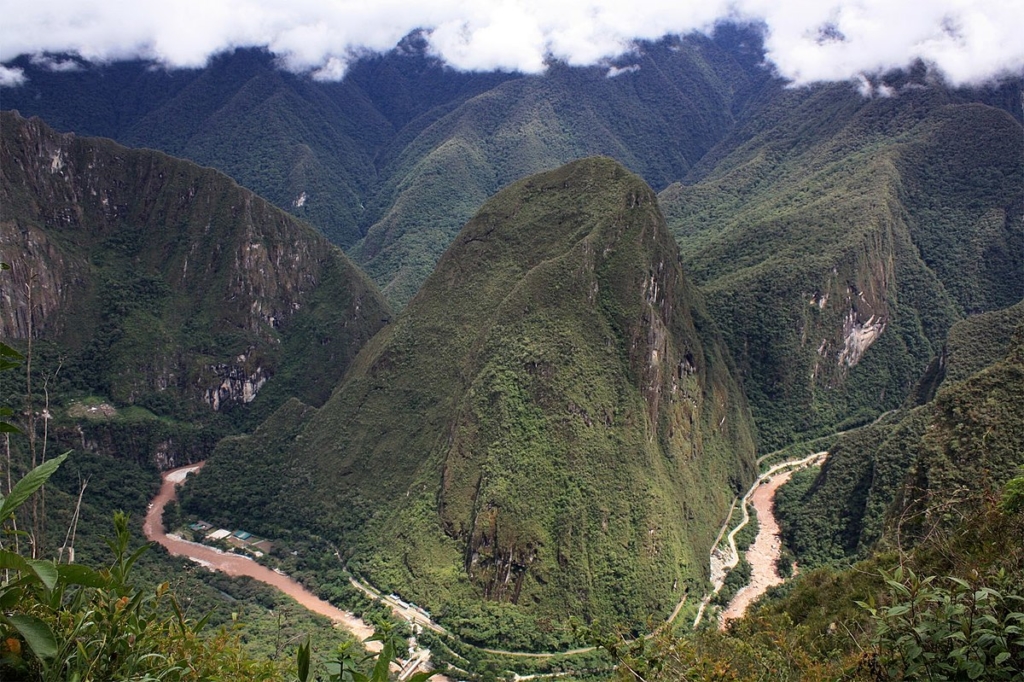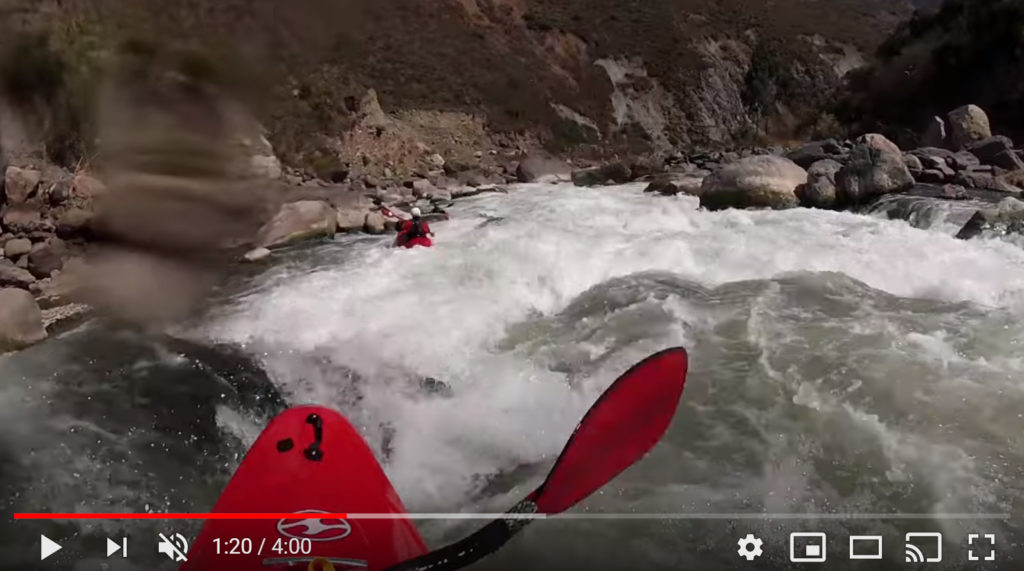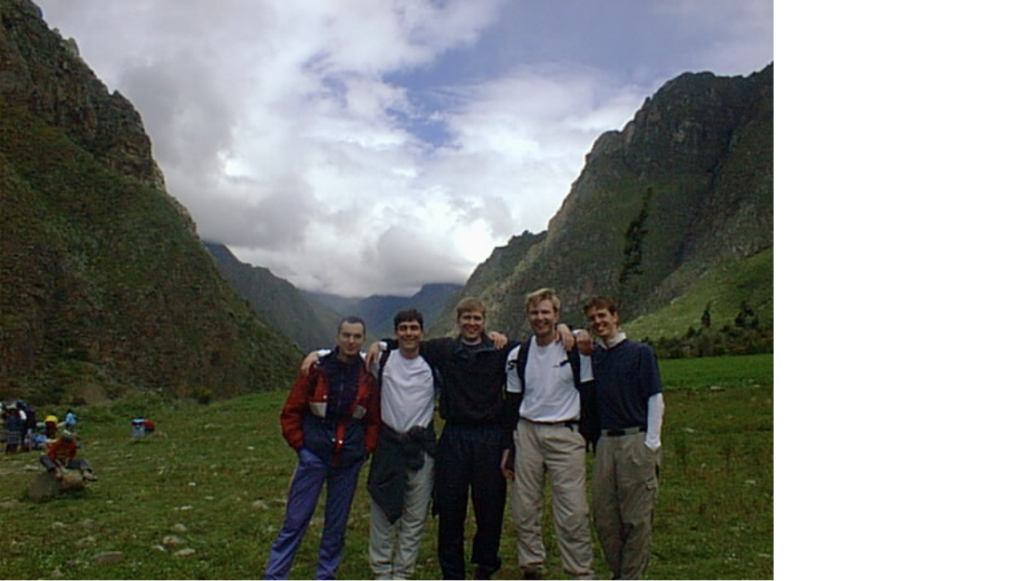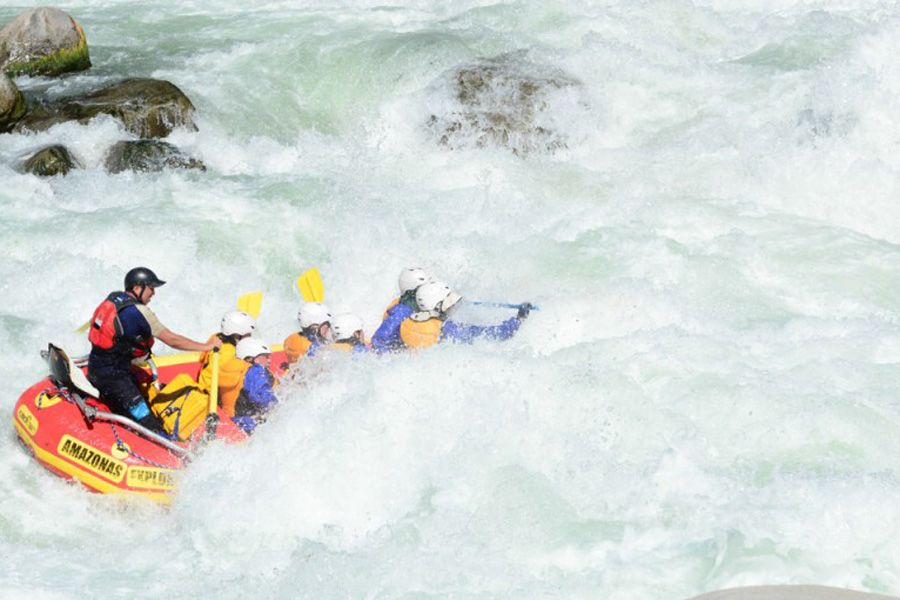
As my wife and I navigate coronavirus, I remember a lesson I learned in 2000. During a Spring Break hiking trip to Machu Picchu, my business school friends and I had a near death experience on the Urubamba river. We learned that just because you’re allowed to do something, that doesn’t mean it’s safe.
We were all late twenties, physically fit, and ready for adventure. When we arrived in Cusco at eleven-thousand-feet in elevation, even climbing stairs left us catching our breath. The air was that thin.
We needed to acclimatize to the altitude before starting our four-day hike. There were three choices: 1) tour the tiny town of Cusco, 2) explore Class 3 rapids, or 3) take on Class 5 rapids. Class 5 is the most challenging. For our group, this was the clear choice.
Ignoring the Danger Signs
We reached the launch point on the Urubamba River after a bumpy, slow bus ride. Our guide, who went by the name Rambo, barely spoke English. After his brief instructions, we quickly entered the water and were soon bracing the rapids. We weren’t experienced rafters. Only one of us had been on Class 5 rapids, and only for a short stretch of river. The Urubamba is a continuous, churning roller coaster with no calm areas.
For the first 20 minutes, we were having the time of our lives. It was exhilarating.
During our first break, Rambo gave us simple instructions about what was ahead. He told us in broken English to “Stay left my friends. No panic.” There were plenty of clues we weren’t exactly safe, even before he told us not to panic. We missed all of them.
Risk Becomes Reality

Shortly after re-entering the water, Rambo yelled again. We barely heard him over the roaring river. Stay left. Paddle harder. No panic.
We hadn’t acclimatized yet. We were fully exerting ourselves at nine-thousand-feet in elevation. It was day two of the trip, and we had no meaningful rafting experience.
The video at left shows what Urubamba Class 5 rapids are like for an experienced, professional safety kayaker who had acclimatized. Even he says it’s “definitely the pushiest whitewater I have paddled!”
Before I knew what was happening, the raft dropped suddenly into a hole. A wave crashed over my head. I plunged into the river, forced instantly to the bottom by the hydraulic we were in.
A torrent of water pinned me on my back, crushing my chest cavity. All I could think to do was stay still. Fighting the current would only consume precious oxygen.
Exhausting Race to Safety

Thankfully, the water moved forcefully downstream. This launched me down the river in what seemed like an underwater tube. We were wearing full wet suits and vests, but the water’s force kept me under.
When I finally popped up, the raft was 30 yards behind me, spinning in circles in the hole we had failed to avoid.
I tried yelling to the safety kayaker but had water in my lungs. I could breath, but not freely enough to make a sound. The safety kayaker signaled that he couldn’t get to me. He just pointed toward the shore.
The Urubamba Lesson Applies to Coronavirus
Already exhausted, I fought through the Class 5 rapids toward the shore. I managed to grab land just before my body gave out. On shore, I coughed up water and vomited. Eventually I caught my breath and saw our group scattered on both shores. We couldn’t account for one of our friends. We had no idea if he was alive. It took what seemed like an eternity to find him. He was miles downriver.
Once we were all back to the safety of the bus, we talked about the signals we missed. There were many signs and we had ignored them all. Every guide book and every expert knows you should “take it easy” until you acclimatize.
The ‘authorities’ allowed us brave the Class 5 rapids with no experience but that didn’t mean it was safe.
We all resolved to make better decisions going forward, especially in the face of peer pressure and inconvenience. Even if it made us feel like chickens.
Authorities Downplay Coronavirus Danger
My family lives in Georgia. Our governor reacted slowly to COVID-19. He’s an incurious denier of fact and science, but an authority nonetheless. Georgia isn’t an anomaly. Razorhorse’s remote workforce posted many blog articles pointing to insufficient government warnings in Italy, India, Ukraine, Philippines, Macedonia, and Brazil. Still, many of these less developed countries managed risk better than we have in the US or my home state of Georgia.
In June, we had to decide if we were still sending our son to sleepaway camp. Last year was his first year, and he absolutely loved it. After nearly four months of lockdown and home schooling, he desperately wanted to go.
Camp authorities assured parents they were taking every coronavirus precaution. My wife talked to other mothers whose sons were also signed up for the camp. Half decided not to send their kids because of coronavirus, half saw minimal risk. My wife and I ultimately decided to send our son.
Coronavirus Risk Becomes Reality

Four days into the weeklong camp, we got an email saying a counselor had tested positive for coronavirus. Camp officials assured parents all precautions were being taken. Still, we could pick our children up early if we wanted.
Again, my wife discussed it with the other mothers. Ultimately, we decided our son probably wasn’t infected and we were confident the camp would double down on coronavirus precautions. We decided to pick him up on the last day, day 7.
We took him to be tested for coronavirus when we got home. He tested positive. We quarantined ourselves for two weeks. We tried to keep our distance from our son, but that was impossible.
Prioritizing Coronavirus Safety
We think we had the virus but don’t know for sure. My wife and I had mild symptoms right after our son did. Fortunately, we all recovered quickly, escaping the sometimes-deadly results of this virus.
We’ll test for antibodies but issues with test reliability mean we’ll have to continue social distancing regardless. Still, we’re comforted that our son is safe and that our family is safe. We’re also confident we didn’t spread the virus. We took all necessary precautions, isolating and wearing masks.
Some parents didn’t have their children tested. They didn’t know their kids were infected until they showed symptoms. During the incubation period, those kids potentially infected friends, grandparents, and strangers.
At last count, 44% of the camp attendees and counselors tested positive for coronavirus. We believe the actual number is much higher.
As we continue navigating the pandemic, I remember the lesson I learned with the Machu Picchu Mafia 20 years ago. Just because our leaders are telling us things are fine, that doesn’t mean they are.
Every week, neighbors rant on Next Door about masks infringing on their freedom. Some claim masks are ineffective or even dangerous. Friends and relatives send misleading statistics that downplay coronavirus. The risk, however, is real.
Make Your Own Decisions About Coronavirus
Here are some statistics that should put coronavirus in perspective.
- Cancer is the leading cause of death in the US, claiming about 600k lives per year
- Accidental death is the third leading cause of death, claiming about 160k lives per year
- Vietnam claimed the lives of 50k US servicemen and women
- In just five months, COVID-19 has claimed nearly 170k lives in the US alone
I don’t know if my wife and I are taking more risks than we should. We are deliberate with every decision. We wear masks in public, and we spend most of our time isolated together at home. When we do see friends, we keep our distance.
In the face of peer pressure, political tribalism, good old American rugged individualism, and with authorities telling us it’s safe to go bowling or get a tattoo, it’s imperative we think for ourselves and stay safe. Even more important, it’s our duty as citizens to keep our neighbors safe.

